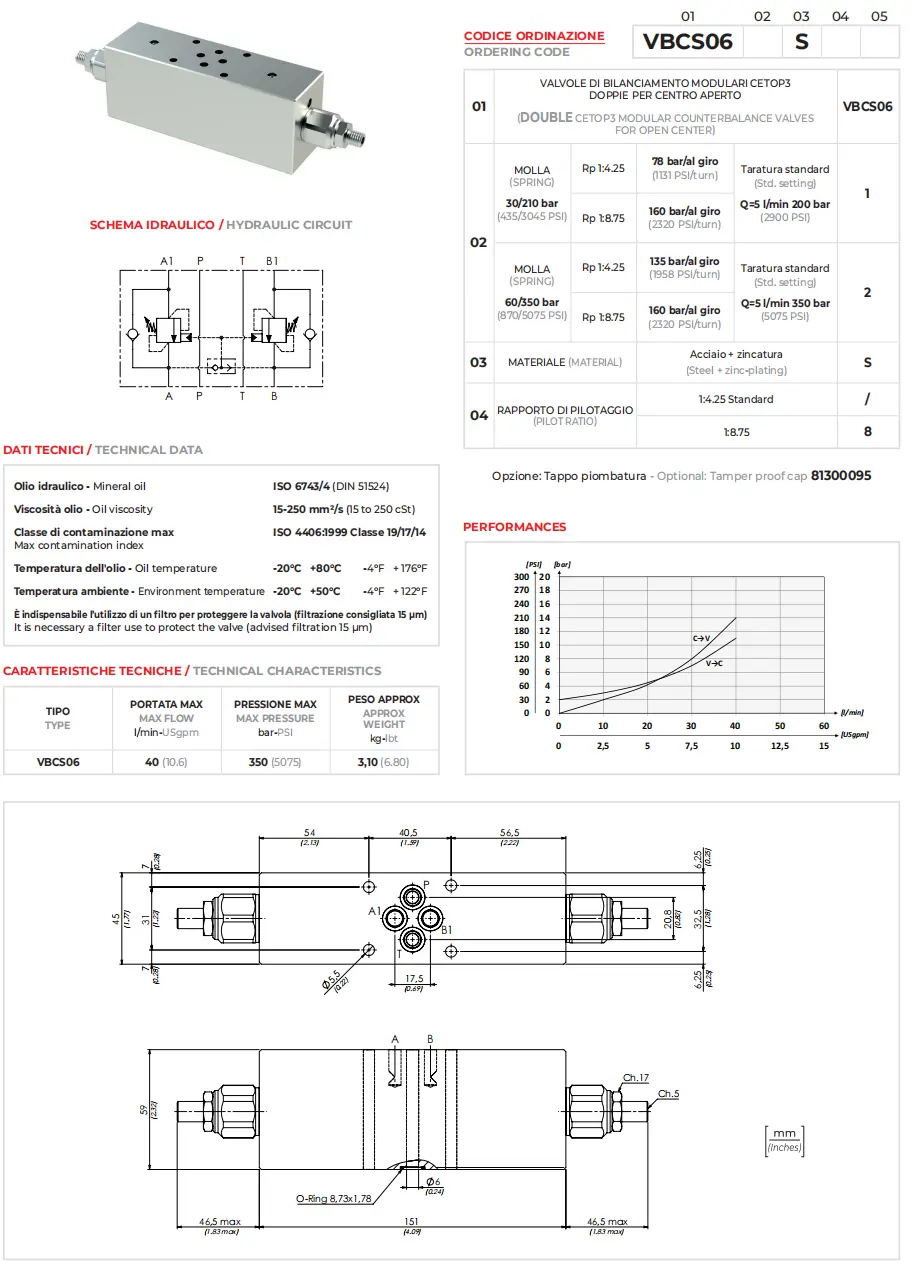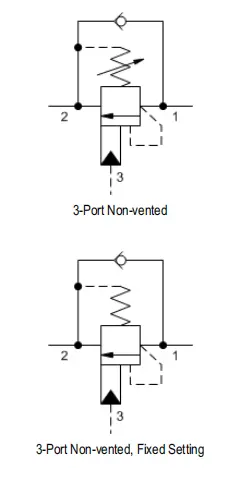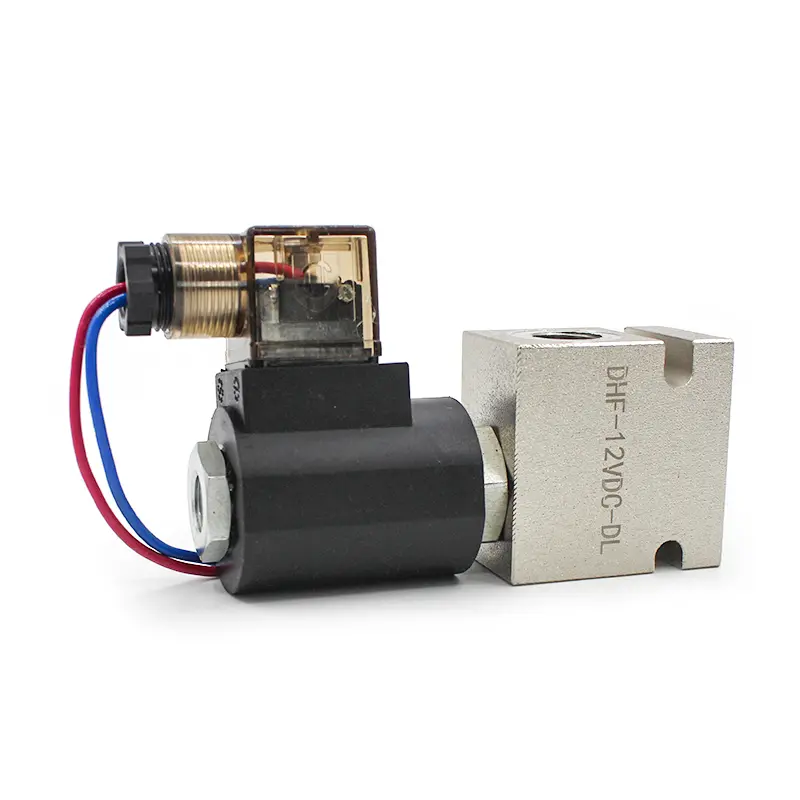
A Complete Guide to Proportional Solenoid Valves for Precise Flow Control
2025-10-11I've been running a factory in China that specializes in hydraulic valves. We've built relationships with machinery manufacturers and system integrators across the USA, Europe, and Australia. I've spoken with hundreds of procurement officers like Mark Thompson, who need reliable, high-quality components without the communication headaches and logistical nightmares. This article is for you, Mark, and everyone else who needs to understand one of the most versatile components in modern fluid power: the proportional solenoid valve. We will dive deep into what they are, how they provide precise flow control, and how choosing the right one can make or break your production schedule and product quality. This guide will give you the confidence to talk tech and make smarter purchasing decisions.
What Exactly is a Proportional Solenoid Valve and How Does it Work?
Let's start with the basics. Imagine you have a light switch. You can turn it on, or you can turn it off. That’s a standard solenoid valve—it's binary. Now, imagine you have a dimmer switch. You can adjust the light from completely off to full brightness and every level in between. That’s a proportional valve. A proportional solenoid valve is an electromechanical device that uses an electromagnetic solenoid to control the flow of a fluid (either a liquid or a gas) in proportion to an electrical input signal. Instead of just opening or closing, it can modulate the opening size, giving you incredible precision over the flow rate or pressure.
How does it do this? It's quite clever. The valve contains a solenoid, which is a coil of wire. When you pass an electrical current through this coil, it creates a magnetic field. This field acts on a plunger or spool inside the valve body, moving it against a spring. The key is that the strength of this magnetic field—and therefore the distance the plunger moves—is directly proportional to the amount of current you apply. A small current moves the plunger a little, allowing a small amount of fluid through. A larger current moves it further, allowing more fluid through. This variable positioning is what gives you proportional control.
The result is a control valve that can make continuous and subtle flow adjustments. This capability is fundamental for systems that require more than a simple on/off function. A controller sends a variable electrical signal (like a 0-10V or 4-20mA signal) to the solenoid valve, which then translates that signal into a precise physical opening. This allows a machine to deliver precise amounts of fluid, maintain a specific pressure, or ramp a process up and down smoothly. It’s this ability for precise control that makes the proportional valve so valuable in sophisticated machinery.
How is a Proportional Valve Different from a Standard On/Off Solenoid Valve?
Understanding the distinction between a standard on/off solenoid valve and a proportional valve is critical for any procurement officer or engineer. While both use a solenoid to actuate the valve, their function and application are worlds apart. As I mentioned, the standard on/off valve is binary; it’s either fully open or fully closed. Think of it as a digital device (1 or 0). It’s perfect for simple tasks like starting or stopping flow, directing fluid to one of two paths, or acting as a safety shutoff.
A proportional solenoid valve, on the other hand, is an analog device. It provides a variable output that is proportional to its input. The position of the valve’s internal components can be set anywhere between fully open and fully closed, allowing for metered flow control. This means you can achieve a specific flow rate, not just "on" or "off." This difference is what allows for the smooth, precise operation required in advanced hydraulic and pneumatic systems.
To put it into perspective, here is a simple comparison:
| Feature | Standard On/Off Solenoid Valve | Proportional Solenoid Valve |
|---|---|---|
| Control Type | Digital (On/Off) | Analog (Variable) |
| Function | Start/Stop Flow, Directional Control | Modulate Flow Rate, Pressure Control |
| Output | Fully Open or Fully Closed | Infinitely Variable Opening |
| Complexity | Simple, Lower Cost | More Complex, Higher Cost |
| Power Input | Fixed Voltage (e.g., 24VDC) | Variable Voltage or Current (e.g., 0-10V) |
| Common Use | Simple Actuation, Safety Shutoffs | Precision Dosing, Speed Control, pressure control |
For someone like Mark, the choice depends entirely on the application's needs. If his customer is building a simple hydraulic press that just needs to extend and retract a cylinder, a standard solenoid valve will do. But if they are building a sophisticated medical device that must deliver precise doses of oxygen, a proportional control valve is non-negotiable.

What Are the Main Types of Proportional Valves?
The world of proportional valves is diverse, with different designs tailored for specific tasks. While they all operate on the principle of proportional control, their internal mechanisms and intended applications vary. Broadly, we can categorize them based on the parameter they are designed to control: flow or pressure. Knowing the types of proportional valves is essential for sourcing the right component for a specific machine.
First, we have proportional flow control valves. Their primary job is to regulate the volume of fluid that passes through them per unit of time (the flow rate). These are essential for controlling the speed of hydraulic motors or cylinders. By adjusting the electrical signal, you can make an actuator move faster or slower with great precision. Some are pressure-compensated, meaning they maintain a constant flow rate even if the load pressure changes. This is critical in applications like conveyor belts or machine tool feeds where consistent speed is paramount.
Second are proportional pressure control valves. This category includes relief valves, pressure-reducing valves, and sequence valves. Instead of controlling flow volume, these valves regulate the system's pressure. For example, a proportional relief valve can have its pressure setting changed on the fly by an electronic controller. This is incredibly useful in applications like injection molding, where different pressures are needed at different stages of the cycle. These valves regulate pressure with a high degree of accuracy, preventing over-pressurization and enabling complex pressure profiles. Some valves combine these functions, but understanding whether you need to manage flow and pressure or just one of them is the first step in selection. Our factory produces a wide range of valves, including various pressure control valves, to meet these diverse needs.
Why is Proportional Control So Crucial in Modern Automation?
The drive for greater efficiency, precision, and flexibility in manufacturing and machinery is why proportional control has become so indispensable. In modern automation, processes are no longer simple start-stop sequences. They involve complex movements, variable speeds, and dynamic forces that must be managed with extreme accuracy. This is where the limitations of on/off control become obvious and the benefits of a proportional valve shine.
Think about a modern CNC machine or a robotic arm. These systems require smooth acceleration and deceleration to avoid jerky movements that could damage the workpiece or the machine itself. A proportional control valve allows for this by gradually increasing or decreasing the fluid flow to the actuators. This leads to better product quality, less wear and tear on mechanical components, and faster cycle times. Furthermore, proportional valves reduce energy consumption. Instead of running a pump at full power and dumping excess flow over a relief valve (which generates heat and wastes energy), a system with a proportional valve can precisely match the flow and pressure to what the load requires at any given moment.
This level of control also enhances safety and adaptability. Processes can be fine-tuned via software without any mechanical changes, allowing a single machine to handle a variety of tasks or products. For machinery manufacturers, this means they can offer more versatile and higher-performing equipment. For end-users, it translates to lower operating costs and higher productivity. The adoption of proportional solenoid valves is a direct response to the increasing demands of sophisticated automation, offering precise control over every aspect of a machine's operation.

How Do Proportional Valves Enable Closed-Loop Control Systems?
One of the most powerful applications for a proportional valve is within a closed-loop control system. To understand this, let's first define the two main types of control systems: open-loop and closed-loop. An open-loop system is like a simple toaster: you set the timer, and it applies heat for that duration, regardless of whether the bread is perfectly toasted or burnt. It has no feedback. It sends a command and hopes for the best.
A closed-loop system, however, is much smarter. It includes a feedback mechanism, typically a sensor, that measures the actual output. This feedback is sent back to the controller, which compares the actual output to the desired setpoint. If there's a difference (an "error"), the controller adjusts its output signal to correct it. This is where the proportional valve becomes a critical component. Imagine you want to maintain a precise pressure in a hydraulic line. A pressure sensor measures the actual pressure and sends this reading to the controller. The controller compares it to the target pressure. If the pressure is too low, the controller increases the electrical signal to the proportional solenoid valve, opening it further. If it's too high, it reduces the signal.
This continuous loop of measuring, comparing, and adjusting is what we call closed-loop control. It allows systems to automatically compensate for variables like changes in temperature, fluid viscosity, or load. A proportional valve is the "muscle" of this system, making the physical adjustments that the "brain" (the controller) commands. This synergy between the sensor, controller, and proportional valve enables an incredible level of accuracy and stability, which is impossible to achieve with a simple on/off solenoid valve. This is the foundation of high-performance hydraulic systems.
Which Industries Benefit Most from the Use of Proportional Valves?
The application of proportional valves spans nearly every sector of modern industry, but some fields rely on their precision more than others. In my experience exporting to North America and Europe, I see a few key industries where the use of proportional valves is not just a benefit but a necessity. The ability to achieve precision flow control is a game-changer for them.
1. Mobile and Construction Equipment: Think of excavators, cranes, and forestry equipment. The operators need to perform delicate, controlled movements. A proportional valve allows them to feather the controls, smoothly lifting heavy loads or digging with precision. This improves productivity and, crucially, enhances safety on the job site.
2. Manufacturing and Industrial Automation: This is a huge area. Injection molding machines use proportional pressure control valves to manage clamping and injection pressures with high accuracy. Metal stamping presses use them to control the speed and force of the ram. CNC machines and robotics, as mentioned earlier, rely on them for smooth and precise motion control.
3. Medical Technology: This is a rapidly growing field where proportional valves are used extensively. Ventilators and anesthesia machines use proportional solenoid valves to precisely control the flow of air and various medical gases delivered to a patient. Dialysis machines and infusion pumps also depend on this technology for accurate fluid management. In medical equipment, reliability and precision are matters of life and death, making high-quality proportional valves essential.
4. Entertainment and Simulation: You might be surprised, but theme park rides and advanced flight simulators use sophisticated hydraulic systems with proportional valves to create realistic and safe motion. They provide the smooth, dynamic movements that make these experiences so immersive.
These are just a few examples. Essentially, any application requiring precise fluid control, variable speed, or dynamic pressure adjustments is a prime candidate for a proportional valve.
Can Proportional Valves Effectively Control Both Liquid and Gas Flow?
Yes, absolutely. While we often talk about "hydraulic" valves for liquids (like oil) and "pneumatic" valves for gases (like air), the fundamental principle of a proportional valve applies to both media. However, the valve’s design and materials must be appropriate for the specific fluid. The challenges of controlling a liquid versus a gas are different, so the valves are engineered accordingly.
For hydraulic applications, which is my factory's primary focus, the proportional valve is designed to handle high pressures and the viscosity of hydraulic oil. The internal clearances, seal materials, and spool designs are optimized for incompressible fluids. These valves are designed to provide smooth control of fluid flow to move heavy loads with great force and precision. From powerful industrial presses to mobile machinery, these valves are the workhorses of fluid power.
For pneumatic applications, the valves are controlling a compressible medium—gas. This presents different challenges. The response times can be faster, but controlling pressure and flow can be more complex due to the compressibility of the gas. Proportional valves used for gas flow are often found in applications like industrial automation for robotic grippers, process control for mixing gases in medical devices, and in HVAC systems. The materials must be compatible with the specific gas (e.g., oxygen, nitrogen, or natural gas) to prevent corrosion or dangerous reactions. So, while the concept is the same, a proportional valve intended for hydraulic oil cannot simply be swapped for one controlling air. It's crucial to specify the media when sourcing a solenoid valve.
What Should You Look for When Choosing a Proportional Solenoid Valve Supplier?
This is a question I discuss with customers like Mark every day. For a procurement officer in the USA buying from a factory in China, trust and reliability are paramount. The product itself is important, but the partner you choose is just as critical. Here are the key factors based on my experience and the common pain points I hear about.
First, Quality and Certifications. Don't just take a supplier's word for it. Ask for their quality inspection reports and proof of certifications like ISO 9001. A reputable factory will have a rigorous quality control process, from raw material inspection to final product testing. At my factory, every single proportional valve is tested for performance before it ships. We understand that certificate fraud is a real concern, so we are always transparent and provide verifiable documentation. A supplier who is hesitant to share this information is a major red flag.
Second, Technical Support and Communication. Mark's pain point about inefficient communication is something I hear often. You need a partner who has a knowledgeable sales and engineering team that can understand your technical requirements, even if you aren't an expert yourself. Can they help you select the right proportional control valve for your application? Do they respond to your emails promptly and clearly? Language barriers can be an issue, so working with a team that has strong English skills is crucial. We invest heavily in training our team to ensure they are not just order-takers, but problem-solvers.
Third, Logistics and Lead Times. A delayed shipment can shut down your entire production line. This is a huge pain point. Ask potential suppliers about their typical lead times and their logistics process. Do they have experience shipping to your country? A good supplier will provide a realistic delivery schedule and communicate proactively if any unforeseen delays occur. They should offer a variety of shipping and payment options to suit your business needs. Predictability is key. We work with reliable freight forwarders and provide clear tracking so our customers always know where their order is. A reliable Direct Acting Sequence Valve or a complex proportional valve should be treated with the same logistical care.

What are Common Challenges and Solutions in Using Proportional Valves?
Even the best proportional valve can underperform if not implemented correctly. Understanding the common challenges can help you troubleshoot issues and design more robust systems. One of the most frequent issues is contamination. Hydraulic fluid must be kept extremely clean. Tiny particles of dirt can jam the precise internal components of a proportional solenoid valve, causing it to stick or respond erratically. The solution is rigorous filtration. Always use high-quality filters and follow a strict maintenance schedule for changing them and the hydraulic fluid.
Another challenge is properly tuning the electronic controller (the amplifier or driver). A poorly tuned proportional valve controller can cause the system to overshoot its target, oscillate, or respond too slowly. Tuning involves adjusting parameters like gain, ramp times, and frequency to match the valve's characteristics with the system's dynamics. Modern controllers often have auto-tuning features, but a good supplier can provide recommended starting parameters for their specific solenoid valve, which can save hours of frustration.
Finally, electrical issues can be a headache. Things like improper wiring, electrical noise from other equipment, or an unstable power supply can affect the electrical signal sent to the valve, leading to inconsistent performance. Ensuring proper shielding for cables and using a stable, dedicated power source are crucial steps. When you use proportional valves, you are dealing with a high-precision instrument. Treating it as such—with clean fluid, a well-tuned controller, and clean power—will ensure you get the reliable performance you paid for, from zero flow to max flow over millions of cycles. This applies whether you are using a standard Solenoid Valve (Three Ports, Two Positions) or a more complex proportional unit.
What Future Trends Are Shaping Proportional Valve Technology?
The world of fluid power is constantly evolving, and the proportional valve is at the heart of many exciting developments. The biggest trend is the integration of more "intelligence" directly into the valve itself. We are moving towards "smart valves" that have onboard electronics and sensors. This means the controller and sometimes even the flow sensor are built right into the solenoid valve body. This simplifies wiring, reduces system complexity, and can improve performance by having the control and closed-loop calculations happen right at the source.
Another major push is for greater energy efficiency. New designs for proportional valves are focusing on reducing internal leakage and minimizing the power required to actuate the solenoid. As energy costs rise and environmental regulations tighten, a valve that can perform its function with less wasted energy is highly desirable. This is leading to innovations in materials, internal geometries, and solenoid technology. Just as we develop more efficient Dual Cross-Over Relief Valves, we are applying the same principles to our proportional lines.
Finally, miniaturization is a key trend, especially in fields like medical technology and mobile robotics. The demand is for smaller, lighter components that deliver the same or better performance. This requires advanced manufacturing techniques and clever design to pack all the functionality of a proportional control valve into a much smaller package. The market for compact and efficient proportional solenoid valves is expected to grow significantly as machinery across all sectors becomes more compact and sophisticated. As a manufacturer, staying on top of these trends is essential to meeting the future needs of our customers.
Key Takeaways
As we've seen, the proportional solenoid valve is a versatile and powerful component that is essential for modern, high-performance machinery. For procurement officers and engineers like Mark, understanding them is key to making smart purchasing decisions.
Here’s a quick summary of what to remember:
- Function: A proportional valve provides variable, analog control over fluid flow or pressure, unlike a simple on/off solenoid valve.
- Mechanism: It works by using a variable electrical current to precisely position a spool or plunger, modulating the flow.
- Key Benefit: It enables proportional control, which is crucial for automation tasks requiring smooth motion, variable speed, and precise force management.
- Applications: They are indispensable in industries like construction, manufacturing, medical equipment, and entertainment where precision is paramount.
- System Integration: Proportional valves are the key actuators in closed-loop systems, working with controllers and sensors to achieve incredible accuracy.
- Supplier Selection: When choosing a supplier, look beyond price. Prioritize quality certifications (ISO), strong technical communication, and reliable logistics to avoid common pain points.
- Success Factors: To get the best performance, ensure your system has clean fluid, a properly tuned electronic controller, and a stable electrical supply.




